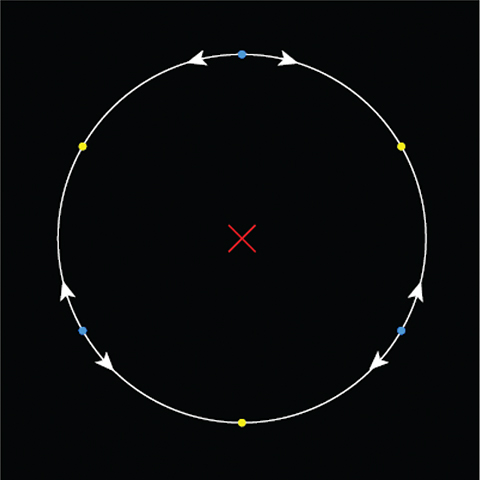Bonneh, Y. S., Cooperman, A., & Sagi, D. (2001). Motion-induced blindness in normal observers. Nature, 411, 798–801. doi: 10.1038/35081073 |
Devyatko, D., & Pastukhov, A. (2018). Extrinsic grouping factors in motion-induced blindness. PLoS One, 13(1), e0192133. doi: 10.1371/journal.pone.0192133 |
Gorea, A., & Caetta, F. (2009). Adaptation and prolonged inhibition as a main cause of motion-induced blindness. Journal of Vision, 9(6), 16.11–16.17. doi: 10.1167/9.6.16 |
Graf, E. W., Adams, W. J., & Lages, M. (2002). Modulating motion-induced blindness with depth ordering and surface completion. Vision Research, 42, 2731–2735. doi: 10.1016/S0042-6989(02)00390-5 |
Hsu, L. C., Yeh, S. L., & Kramer, P. (2006). A common mechanism for perceptual filling-in and motion-induced blindness. Vision Research, 46(12), 1973–1981. doi: 10.1016/j.visres.2005.11.004 |
Kawabe, T., Yamada, Y., & Miura, K. (2007). How an abrupt onset cue can release motion-induced blindness. Consciousness & Cognition, 16, 374–380. doi: 10.1016/j.concog.2006.06.009 |
Mitroff, S. R., & Schol, B. J. (2005). Forming and updating object representations without awareness: Evidence from motion-induced blindness. Vision Research, 45, 961–967. doi: 10.1016/j.visres.2004.09.044 |
Montaser-Kouhsari, L., Moradi, F., Zandvakili, A., & Esteky, H. (2004). Orientation-selective adaptation during motion-induced blindness. Perception, 33(2), 249–254. doi: 10.1068/p5174 |
New, J. J., & Scholl, B. J. (2008). ‘Perceptual scotomas’: A functional account of motion-induced blindness. Psychological Science, 19(7), 653–659. doi: 10.1111/j.1467-9280.2008.02139.x |
Scholvinck, M. L., & Rees, G. (2009). Attentional influences on the dynamics of motion-induced blindness. Journal of Vision, 9(1), 38.1–38.9. doi: 10.1167/9.1.38 |
Shibata, M., Kawachi, Y., & Gyoba, J. (2010). Combined effects of perceptual grouping cues on object representation: Evidence from motion-induced blindness. Attention, Perception & Psychophysics, 72(2), 387–397. doi: 10.3758/APP.72.2.387 |
Wagemans, J., Elder, J. H., Kubovy, M., Palmer, S. E., Peterson, M. A., Singh, M., & von der Heydt, R. (2012). A century of Gestalt psychology in visual perception: I. Perceptual grouping and figure-ground organization. Psychological Bulletin, 138(6), 1172–1217. doi: 10.1037/a0029333 |




